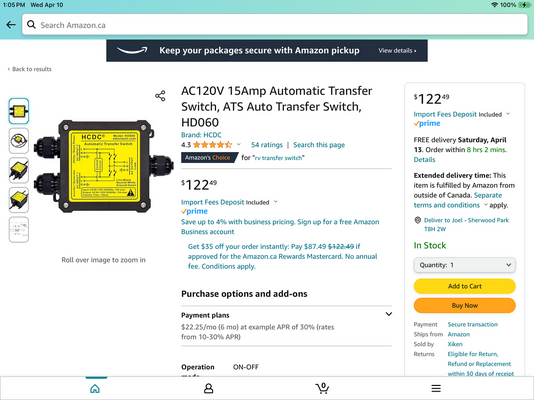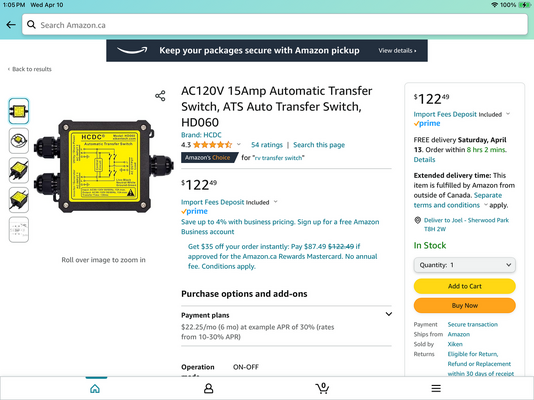Pass me
Well-known member
Hi folks, I'm wanting to connect my stand alone 2000W Inverter to the AC side of the distribution panel, it will be powered by a 12 V100Ah LiFePO4 battery. I will leave my factory LAB system as is (PD 9130/no TCMS).
The lithium battery will be isolated in a closet and I'll recharge it with a Genius10 powered by my generator/extension cord. This way I can use my AC receptacles while boondocking. The problem is when I connect to shore power via the 30A cord.
Do I have to isolate the Inverter from the panel when on shore power? I
could simply unplug the extension cord(s) from the Inverter (that are wired to the chosen [ not all] AC plugs of the trailer) but would these male ends now be live?
While on shore power Can I power the Genius10 charger from any 120AC receptacle inside my trailer without isolating my Inverter?
My hunch is to wire in an on/off switch between the AC panel circuits and my converter to allow easy isolation while on shore power but I'm wondering about the implications if I don't.
This is in the "thinking out loud"
stage by the way but I think it's a dandy (and inexpensive) way to this Lithium battery.
1998 Aerolite 21RDB travel trailer.
As per always all input/warnings and suggestions are most welcome and graciously accepted.
The lithium battery will be isolated in a closet and I'll recharge it with a Genius10 powered by my generator/extension cord. This way I can use my AC receptacles while boondocking. The problem is when I connect to shore power via the 30A cord.
Do I have to isolate the Inverter from the panel when on shore power? I
could simply unplug the extension cord(s) from the Inverter (that are wired to the chosen [ not all] AC plugs of the trailer) but would these male ends now be live?
While on shore power Can I power the Genius10 charger from any 120AC receptacle inside my trailer without isolating my Inverter?
My hunch is to wire in an on/off switch between the AC panel circuits and my converter to allow easy isolation while on shore power but I'm wondering about the implications if I don't.
This is in the "thinking out loud"
stage by the way but I think it's a dandy (and inexpensive) way to this Lithium battery.
1998 Aerolite 21RDB travel trailer.
As per always all input/warnings and suggestions are most welcome and graciously accepted.


